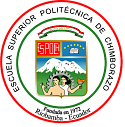Estimation of the non-parametric density function to characterize the reconfiguration times used by the controllers of a Planar Robot prototype
DOI:
https://doi.org/10.47187/perspectivas.vol3iss2.pp9-15.2021Keywords:
Density Function, Mean Square Error, Reliability, KernelAbstract
This paper presents a prototype of a planar robot, which has two controllers to solve inverse cinematic trajectories, so that, if the main controller fails, the other controller is able to regain control of the prototype in the shortest possible time, solving the current trajectory. This process is called reconfiguration. This study aims to estimate a non-parametric density function capable of characterizing the behavior of the times used by the controllers for reconfiguration. The function has been determined by the kernel or kernel method and the best estimate is obtained with the Normal or Gaussian kernel under the mean square error criterion and based on Silverman's proposal for the selection of the bandwidth. In conclusion, the reliability of the controllers is directly related to the designed trajectory.
Métricas
References
S. Chumnanvej, B. M. Pillai, S. Chalongwongse, and J. Suthakorn, “Endonasal endoscopic transsphenoidal approach robot prototype: A cadaveric trial,” Asian Journal of Surgery, vol. 44, no. 1, pp. 345–351, 2021. [Online]. Available: https://doi.org/10.1016/j.asjsur.2020.08.011
A. S. A. Ghafar, S. S. H. Hajjaj, K. R. Gsangaya, M. T. H. Sultan, M. F. Mail, and L. S. Hua, “Design and development of a robot for spraying fertilizers and pesticides for agriculture,” Materials Today: Proceedings, 2021. [Online]. Available: https://www.sciencedirect.com/science/article/pii/S2214785321021933
W. Härdle, M. Müller, S. Sperlich, and A. Werwatz, Nonparametric and Semiparametric Models, 2011, no. January.
M. Spiegel, Teoria y Problemas de Probabilidad y Estadistica, 1975. J.
Guan, J. Lin, J. J. Guan, and E. Mokaramian, “A novel probabilistic short-term wind energy forecasting model based on an improved kernel density estimation,” International Journal of Hydrogen Energy, vol. 45, no. 43, pp. 23 791–23 808, 2020. [Online]. Available: https://doi.org/10.1016/j.ijhydene.2020.06.209
P. Xin, Y. Liu, N. Yang, X. Song, and Y. Huang, “Probability distribution of wind power volatility based on the moving average method and improved nonparametric kernel density estimation,” Global Energy Interconnection, vol. 3, no. 3, pp. 247–258, 2020. [Online]. Available: https://doi.org/10.1016/j.gloei.2020.07.006
A. Barrientos, L. Peñin, C. Balaguer, and R. Aracil, FUNDAMENTOS DE ROBÓTICA, 2nd ed., C. Sánchez, Ed., 2007.
J. J. Craig, Robótica, 3rd ed., P. M. Guerrero Rosas, Ed., 2006, vol. 1, no. 8020.
S. Weglarezyk, “Kernel density estimation and its application Stanisław,” Proceeding of the International Conference on Electrical Power Quality and Utilisation, EPQU, vol. 00037, pp. 102–107, 2011.
C. Péres, Matlab y sus Aplicaciones en las Ciencias y la Ingeniería, Madrid, 2002.
H. J. Pabón, “Probabilidad y estadística con matlab® para investigadores,” p. 124, 2010.
W. Harrington, Learning Raspbian, 2015.
A. Saraí, “Fórmulas para el cálculo de la muestra en investigaciones de salud,” Salud en Tabasco, vol. 11, no. Fórmulas para el cálculo de la muestra en investigaciones de salud, pp. pp. 333–338, 2005. [Online]. Available: https://www.redalyc.org/arti
F. J. Marssey, “The kolmogorov-smirnov test for goodness of fit,” Journal of the American Statistical Association, vol. 46, pp. 68–78, 1951.
R. Levin, D. Rubin, T. Krehbyel, and M. Berenson, Estadística para Administración, 2013, vol. 53, no. 9.
S. Efromovich, Springer Series in Statistics Springer Series in Statistics, 1999.
H. Isaías and U. Salgado, “Métodos Estadísticos No Paramétricos de Suavización para Análisis de Datos Biológicos,” 2000.
B. Silverman, Density Estimation for Statistics and Data Analysis, 1998.
N. Iturmendi, “Estimación de la densidad relativa,” Ph.D. dissertation, 2003.
X. P. Durá, “Estimaciones de densidad no paramétrica vía KERNEL,” Universitat Jaume, 2017.
Published
How to Cite
Issue
Section
License
Copyright (c) 2021 Alex Mantilla, Antonio Meneses, Lourdes Zúñiga

This work is licensed under a Creative Commons Attribution 4.0 International License.
Copyright
The authors of the manuscripts will retain their copyright on their articles published in Pespectivas Journal. These rights allow the authors to present their manuscripts in public, prepare derivative works, reproduce them physically by printing and distribute them on their social or research networks. These rights will remain unchanged as long as the authors respect the publication and free access policy of Perspectivas Journal.
Publication Rights
Perspectivas Journal reserves all first publication rights on each of the articles that the authors have sent to its review and publication process. It implies that authors will only exercise their copyright if they state the source and origin of the publication correctly, mainly when they distribute, share, present, or use their articles' total or partial content.














